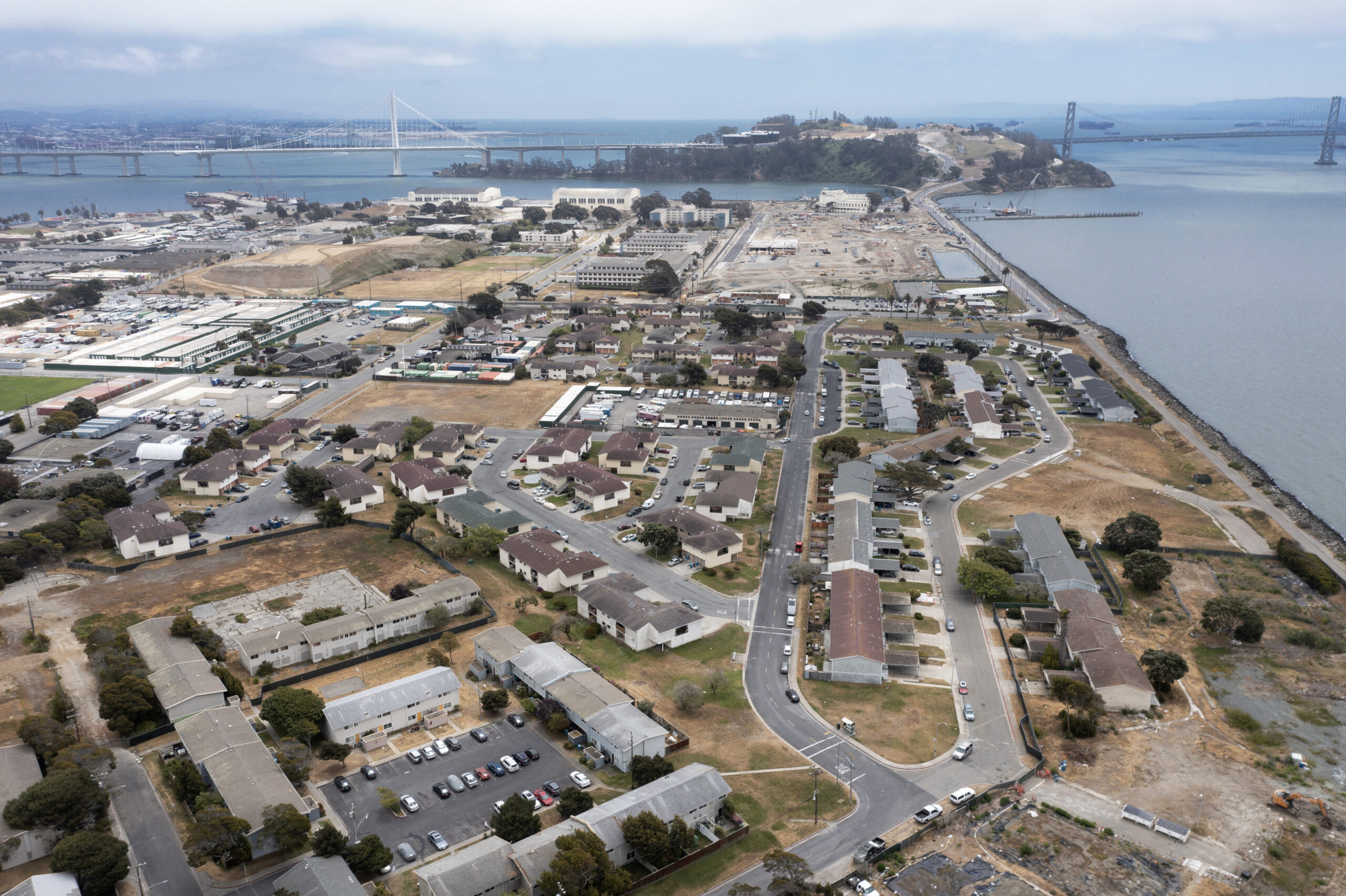A pilot program for an autonomous shuttle service on Treasure Island may finally be lurching forward after being waylaid by the pandemic.
The San Francisco County Transportation Authority’s autonomous shuttle pilot program aims to increase mobility for island residents while decreasing reliance on private cars. Two shuttles will transport residents and visitors as soon as late this year or early 2023.
The driverless shuttle would have a human safety driver and would run past the ferry terminal, the local YMCA, along Gateview Avenue and past the island’s sole grocery store, Island Cove Market.
“The reason for the pilot is to learn what the community thinks about an autonomous shuttle,” said CTA spokesperson Eric Young.
The grant-funded pilot was supposed to start in 2020, but the project got delayed due to health concerns over Covid. “It was masks and six feet apart in 2020. We weren’t in a time and place to move forward when there were such concerns for public safety,” Young said.
Pete Wilson, vice president for the Muni drivers union, said Transport Workers Union Local 250A is against autonomous vehicles, including taxis. “We support humans, and we support our brothers and sisters in the taxi industry,” Wilson said.
Three companies are in the running for the shuttle pilot program: Florida-based Beep, New Zealand-based Ohmio and Michigan-based May Mobility.
According to Young, these three companies were the only ones to apply to supply and operate the shuttles, and the CTA board of directors is expected to decide on a company later this month.
Residents expressed hope about the new shuttle program designed to boost transit around the island, which is expected to have a population boom once new housing planned for the former naval base is built.
Carmen Mack, who has scoliosis and difficulty walking, said that a bus that would stop at Island Cove Market would be helpful, as there is no other way to get there other than by car or on foot.
“People over here, including me, have disabilities, so having a bus that goes around the island would make things a lot easier,” Mack said.
Barklee Sanders, a resident who previously served on the Treasure Island Citizens’ Advisory Committee, said that autonomous shuttles are needed for better access to parts of the island not served by the 25 bus line. The 25 bus runs a limited loop around Treasure Island with only a few stops, but much of its route runs across the Bay Bridge to ferry passengers into Downtown San Francisco.
“You can’t take the 25 to Yerba Buena Island to go to the parks; you can’t take it to the grocery store,” Sanders said.
Howard Wong, a retired architect and member of transit advocacy group Save Muni, said that an autonomous shuttle would operate more reliably than regular buses and could run 24/7, better enabling residents to get around the island and eliminate the need for cars. Wong said that ensuring residents will not need cars is crucial to ensuring that the island’s development will not contribute more car traffic to the already-congested Bay Bridge.
“As the population on Treasure Island grows, transportation is going to be very important, and having dependable public transit connecting to the ferry terminal will be an important part of the transit network,” Wong said.
Autonomous vehicles have stoked controversy through taxis being tested by General Motors subsidiary Cruise, which have been known to stop in the middle of the road and have been involved in collisions.
Total global market share for autonomous vehicles is expected to grow from $130 billion in 2021 to more than $373 billion in 2028, according to Bloomberg.
Wong said that although autonomous vehicles have had issues operating on city streets, the Treasure Island shuttle would be a low-speed shuttle and could operate by running along embedded sensors in the road to ensure that it stays on track.
“What’s most important is dependability, so it’s something you’ll actually use,” Wong said.
